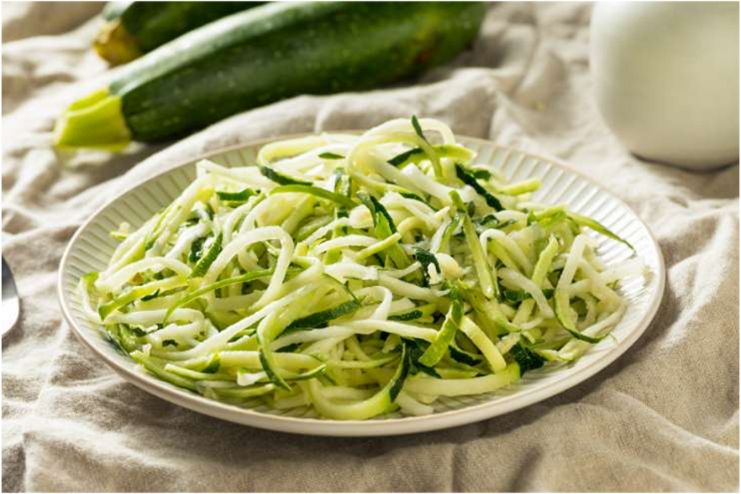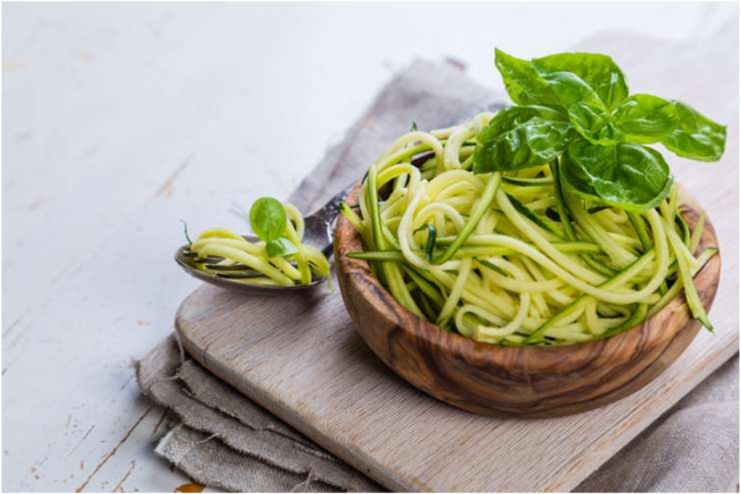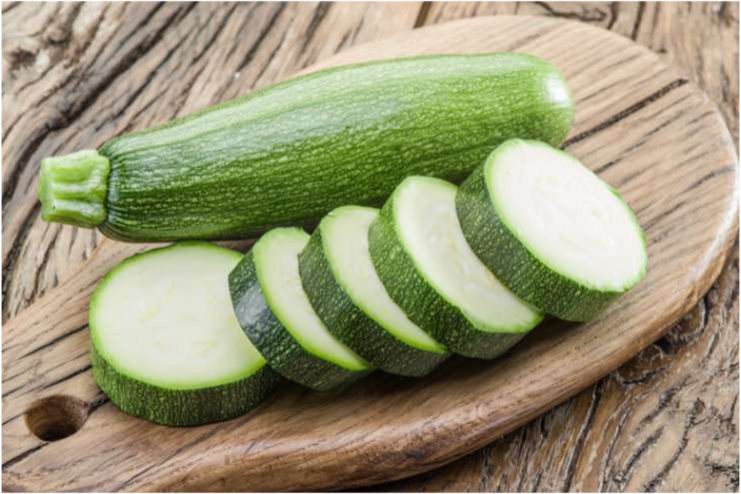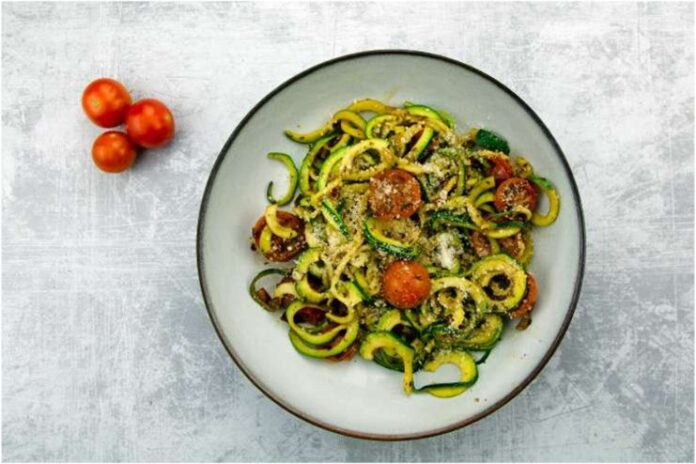Affiliate Disclaimer
Some links in this article are affiliate links. We may earn a small commission if you make a purchase through these links, at no extra cost to you. We only recommend products we find useful to our readersZucchini noodles, affectionately referred to as “zoodles,” are revolutionary in healthy eating. These spiralized zucchini strands are a tasty and nutritious substitute for regular spaghetti.
Zoodles provide a low-calorie, gluten-free, and nutrient-rich foundation for various recipes, making them ideal for people trying to cut back on their carbohydrate intake. Rich in fiber, potassium, and vitamins A and C, zucchini noodles satisfy your appetite for pasta-like textures while promoting dietary health.
Zoodles are flexible and complement sauces, proteins, and other veggies well. They are perfect for people following plant-based, paleo, or keto diets. Zoodles are a delicious first step toward a healthy diet, whether looking for a lighter supper or an inventive method to add more veggies.
Benefits of Zucchini Noodles
Along with melons, spaghetti squash, and cucumbers, zucchini, often called courgette, is a summer squash in the Cucurbitaceae family. Although squash originated in the Americas, this type was created in Italy in the early 1800s. Traditional medicine practitioners have used zucchini to cure various ailments, including pains and colds. However, not all of its applications have scientific support.
These colorful green spirals are a nutritional powerhouse disguised as noodles, and they are more than simply a low-calorie alternative.
Rich in Antioxidants:
Antioxidants are abundant in zucchini, and aid in defending your body against harm caused by free radicals. Zucchini is rich in carotenoids, including beta-carotene, zeaxanthin, and lutein. In addition to providing some protection against specific cancers, like prostate cancer, they may help your heart, eyes, and skin.
Helps Maintain a Healthy Digestive System:
Zucchini supports a healthy digestive system in several ways. Zucchini contains both soluble and insoluble fiber, and has a high fiber content. The insoluble fiber and water content lowers the risk of constipation by giving stools more volume and facilitating the easier passage of food through the digestive system.
Lower Blood Sugar Levels:
People with type 2 diabetes may benefit from eating zucchini to help lower their blood sugar levels. For anyone trying to cut back on carbohydrates, zucchini noodles are a fantastic low-carb substitute for pasta, with 3 grams of carbohydrates per cooked cup (232 grams).
It can be sliced or spiralized and used instead of lasagna, linguini, or spaghetti noodles. Low-carb diets can dramatically drop insulin and blood sugar levels, which may help persons with type 2 diabetes maintain stable blood sugar levels and use less medication.
Could Improve Your Vision:
Zucchini contributes to eye health because it contains high beta-carotene and vitamin C levels. Zucchini also contains antioxidants zeaxanthin and lutein. According to research, these antioxidants can build up in the retina, enhancing eyesight and lowering the risk of age-related eye conditions.
A Healthy Prostate:
Animal studies have suggested that extracts from zucchini seeds may help prevent prostatic hyperplasia, an expansion of the prostate that frequently causes older men to have problems urinating and having sex.
Preparation and Cooking Instructions

Making zucchini noodles at home is fun and straightforward, resulting in a fresh, healthy alternative to traditional pasta. Here’s how to prepare them:
Preparing Zucchini Noodles:
- Wash the zucchini thoroughly. You’ll need about two medium zucchinis for two servings of noodles.
- Cut off the ends of each zucchini before inserting them into the spiralizer. Turn the handle to create long, curly zoodles. If you prefer shorter noodles, you can cut them into manageable lengths after spiralizing them.
- Note: If you don’t have a spiralizer, a vegetable peeler or julienne slicer can also work, though the noodles may be thicker.
Cooking Zucchini Noodles:
- Heat a pan on medium heat and add a drizzle of olive oil.
- Add the zucchini noodles and sauté for 2-3 minutes, tossing gently. Don’t overcook—zoodles cook quickly and can become soggy if left too long. You want them to maintain their bite, just tender enough to enjoy.
- Tip: For extra flavor, you can toss in minced garlic or chili flakes while cooking the zoodles.
Making the Pesto:
Ingredients:
- 2 cups fresh basil leaves
- 1/4 cup pine nuts (or walnuts)
- 1/2 cup grated Parmesan
- 2 garlic cloves
- 1/4 cup olive oil
- Salt and pepper to taste
Instructions:
- Blend the basil, pine nuts, garlic, and Parmesan in a food processor until finely chopped.
- Slowly drizzle olive oil with the processor running until the pesto reaches a smooth consistency.
- Season with salt and pepper.
Toss your cooked zucchini noodles with this fragrant pesto sauce, and you’ll have a dish bursting with fresh, herby goodness! Enjoy this nutrient-packed, low-carb meal as a light lunch or a satisfying side dish.
Variations and Serving Suggestions

You can adapt pesto-topped zucchini noodles to fit various dietary requirements and palates.
- Add sautéed tofu, grilled chicken, or shrimp to the recipe for a protein-rich twist.
- Goat cheese or crumbled feta can also add smoothness and improve the flavor.
- For a vegan version, use the nutritional yeast instead of Parmesan in the pesto and add roasted chickpeas for a crispy protein boost.
- Add sautéed spinach, roasted cherry tomatoes, or mushrooms to improve the dish’s texture and nutritional value.
- A squeeze of lemon or a dusting of red chili flakes can enhance the flavors and add a touch of zest.
- For a well-rounded supper, serve this dish with fresh garden salad or with a side of garlic bread (gluten-free if necessary).
Nutritional Value and Health Benefits

In addition to being a tasty dish, zucchini noodles with pesto are nutrient-dense and fit into a health-conscious lifestyle. The main ingredient in this recipe, zucchini, is high in vital vitamins and minerals and low in calories.
A serving of 85 g of zucchini spiral noodles has 15 calories. This portion contains three grams of carbohydrates, one gram of protein, and zero grams of fat. The latter consists of 1 g of dietary fiber and 2 g of sugar; complex carbohydrates comprise the remainder. Each dish of zucchini spiral noodles has zero grams of saturated fat and zero milligrams of cholesterol. There are 0.30 mg of iron, 10.20 mg of calcium, and 220 mg of potassium in 85 g of zucchini spiral noodles.
Pesto, usually made with fresh basil, garlic, pine nuts, and olive oil, further increases the nutritional content. Strong antioxidants like flavonoids found in basil help fight free radicals and lower inflammation.
Pine nuts contain magnesium, which improves nerve and muscle function, and heart-healthy lipids. Monounsaturated fats, such as those found in olive oil, a staple in pesto, are beneficial for heart health and general well-being.
This dish offers plenty of nutrients and helps control blood sugar levels because it has few carbohydrates and no gluten.
Conclusion
Zucchini noodles are a tasty and wholesome substitute for regular pasta for those seeking a low-carb, gluten-free choice. In addition to being lighter, zoodles are rich in fiber, essential vitamins, and minerals and promote general health and well-being.
When combined with pesto or other creative sauces, they provide a tasty, adaptable meal that can accommodate various dietary requirements.
Adding zucchini noodles to your meals is an easy way to have the comfort of pasta without feeling guilty about eating a lot of carbohydrates. For a healthier, tastier lifestyle, purchase your spiralizer, use your imagination, and embrace this nutritious addition to your food plan!
References
- https://pmc.ncbi.nlm.nih.gov/articles/PMC4934399/
- https://www.healthline.com/nutrition/zucchini-benefits
- https://www.slenderkitchen.com/article/zucchini-noodles-and-zoodles
- https://mortadellahead.com/zucchini-noodles-vs-pasta-what-you-need-to-know/
- https://pmc.ncbi.nlm.nih.gov/articles/PMC5611842/
- https://www.researchgate.net/publication/289652073_Evaluation_of_Cucurbita_pepo_L_lipophilic_extract_on_androgen-induced_prostatic_hyperplasia
- https://www.vogue.com/article/health-benefits-of-spiralizing-zoodles
- https://www.nutritionvalue.org/Zucchini_spiral_noodles_550029_nutritional_value.html
- https://www.eatthismuch.com/calories/zucchini-noodles-1834847
- https://www.allrecipes.com/recipe/172398/zucchini-noodles/
In this Article


















